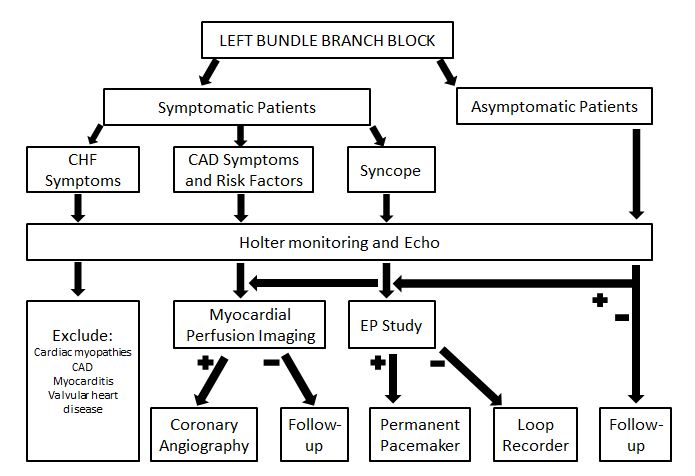Left bundle branch block management strategy
|
Left bundle branch block Microchapters |
|
Differentiating Left Bundle Branch Block from other Diseases |
|---|
|
Diagnosis |
|
Treatment |
|
Case Studies |
|
Left bundle branch block management strategy On the Web |
|
American Roentgen Ray Society Images of Left bundle branch block management strategy |
|
Risk calculators and risk factors for Left bundle branch block management strategy |
Editor-In-Chief: C. Michael Gibson, M.S., M.D. [1]; Associate Editor(s)-in-Chief: Cafer Zorkun, M.D., Ph.D. [2]
Please help WikiDoc by adding more content here. It's easy! Click here to learn about editing.
Overview
Asymptomatic patients with isolated left bundle branch block and no underlying heart disease require no treatment. Routine follow-up is required in such patients. In symptomatic patients treatment is directed at the underlying cause of left bundle branch block, such as ST elevation myocardial infarction. Patients with syncope and LBBB may have a rhythm disturbance that requires a pacemaker. Given the dys-ynchrony that occurs with left ventricular contractility, cardiac resynchronization therapy in heart failure patients may be of benefit.
Management Strategy
